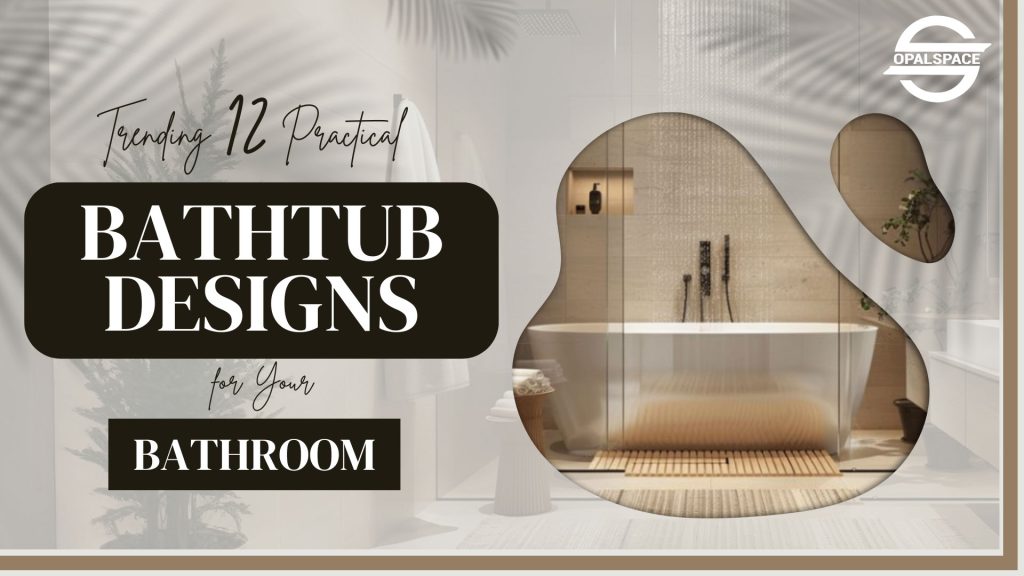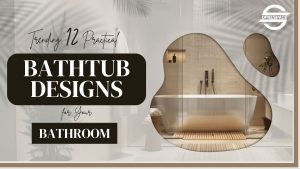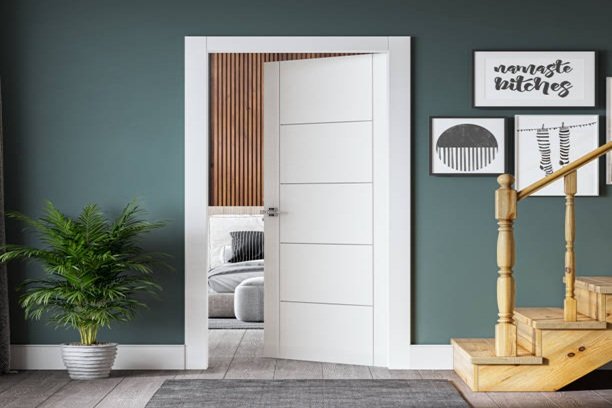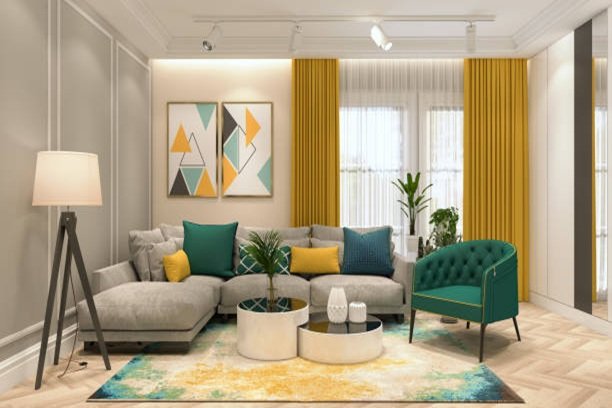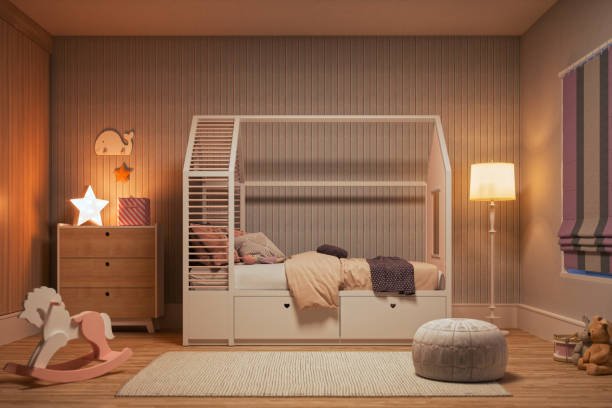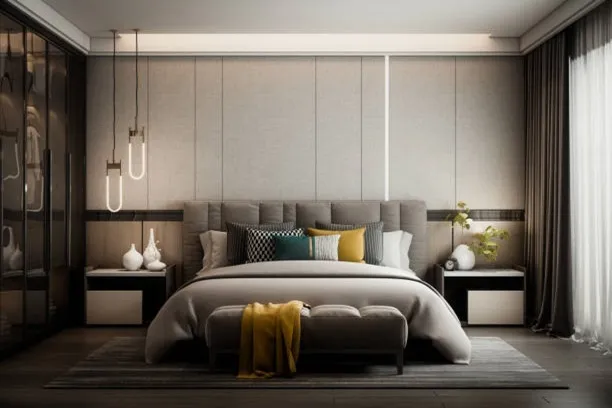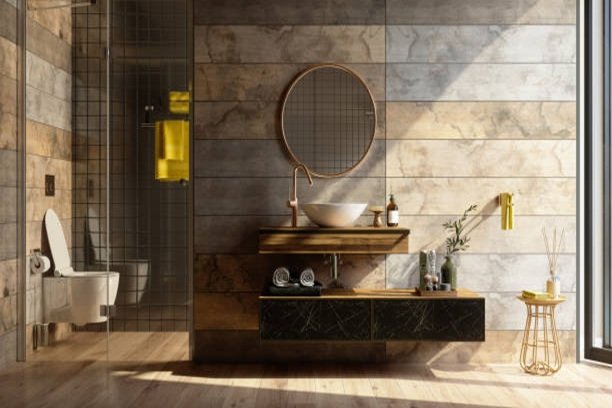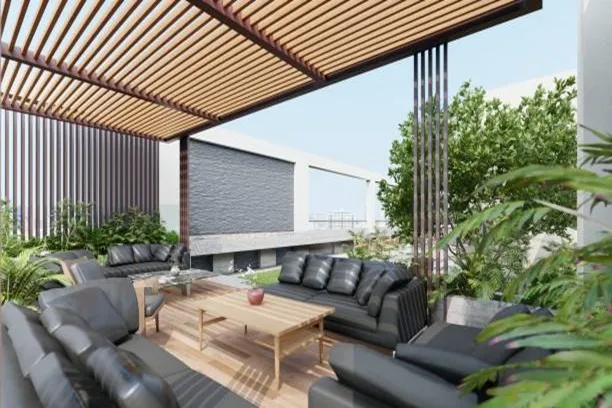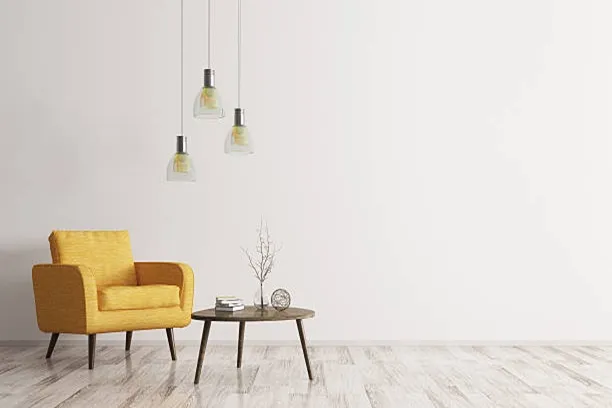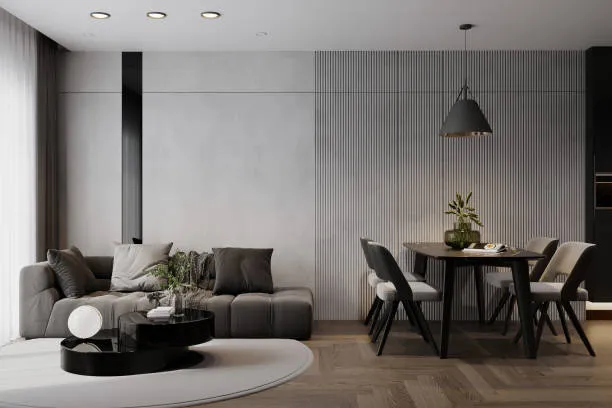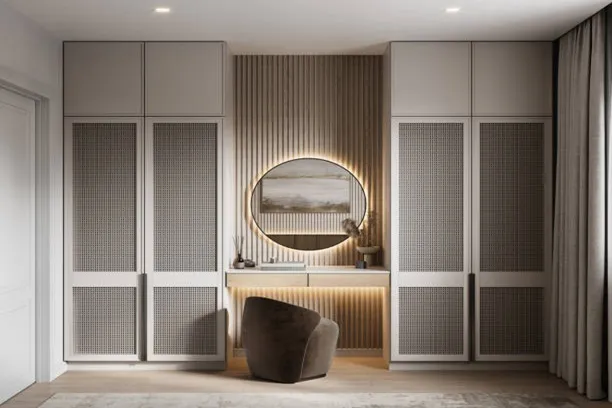Table of Contents
Of all the rooms in your home, the bathroom holds a unique promise to melt away the day’s tension, and the bathtub is the centerpiece for that relaxation. This makes your bathtub design a critical choice, one that mixes desire with practicality. That is why we are here to walk you through the essential journey of selecting the ideal bathtub for your bathroom, breaking down the key considerations of design to ensure your final choice is not only beautiful but perfectly suited to your home and lifestyle.
Statement Freestanding Tub
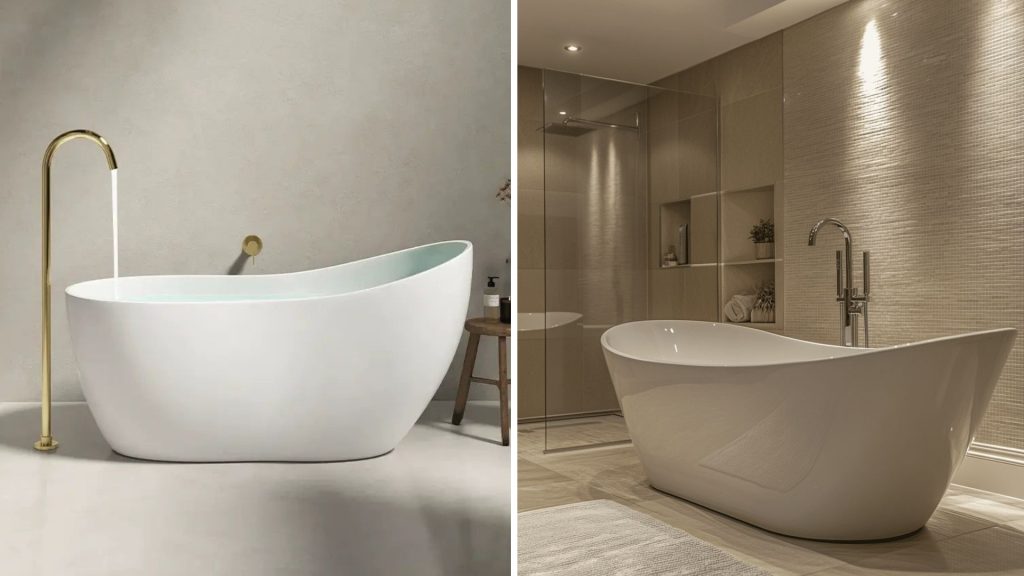
- A freestanding bathtub is designed to be the main focus in your bathroom.
- It doesn’t need to be placed against a wall and can be installed anywhere with floor space and plumbing access.
- These tubs often feature unique shapes, like ovals, rectangles with rounded edges, or asymmetrical designs.
- You can find them in a variety of materials, including acrylic, stone resin, cast iron, and copper.
- They are available in many colours, with black, navy, and forest green being current popular choices beyond classic white.
- The main advantage is their strong visual appeal and the luxury feel they add to the space.
- The downside is that they require a larger bathroom to avoid feeling cramped.
- They are generally more expensive than standard built-in tubs, both in cost and installation.
- You will need to consider the style of the floor-mounted faucet and where the drain will go.
Japanese Soaking Tubs
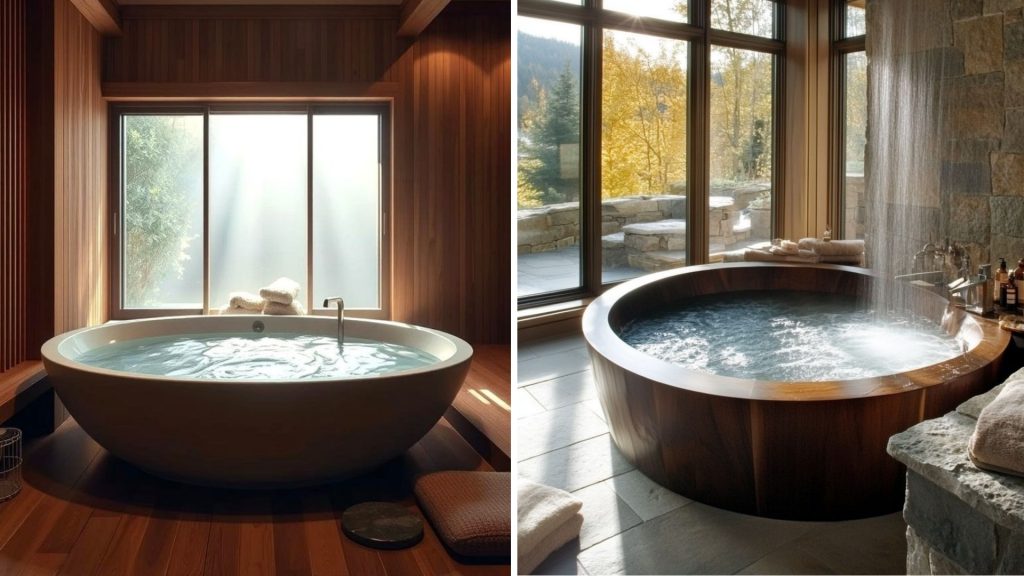
- A Japanese soaking tub, or ofuro, is designed for a deep, upright soak rather than a reclining bath.
- The key feature is its deep walls, which allow you to be submerged in water up to your shoulders while seated.
- They are typically shorter in length but much deeper than a standard Western bathtub.
- You most often find them made from natural woods like hinoki or teak, but modern versions use stone or insulated acrylic.
- The natural wood types are prized for their pleasant aroma and natural heat retention.
- These tubs focus on the ritual of cleansing; you wash and rinse yourself completely before entering the bath.
- The purpose is purely for soaking and relaxing in hot water, not for washing your body.
- Because the water stays clean, the same water can be used by multiple family members, making it water-efficient.
- They are a good fit for smaller bathrooms due to their compact footprint.
- The main consideration is that they require a dedicated space and can have a higher installation cost.
Textured and Fluted Tubs
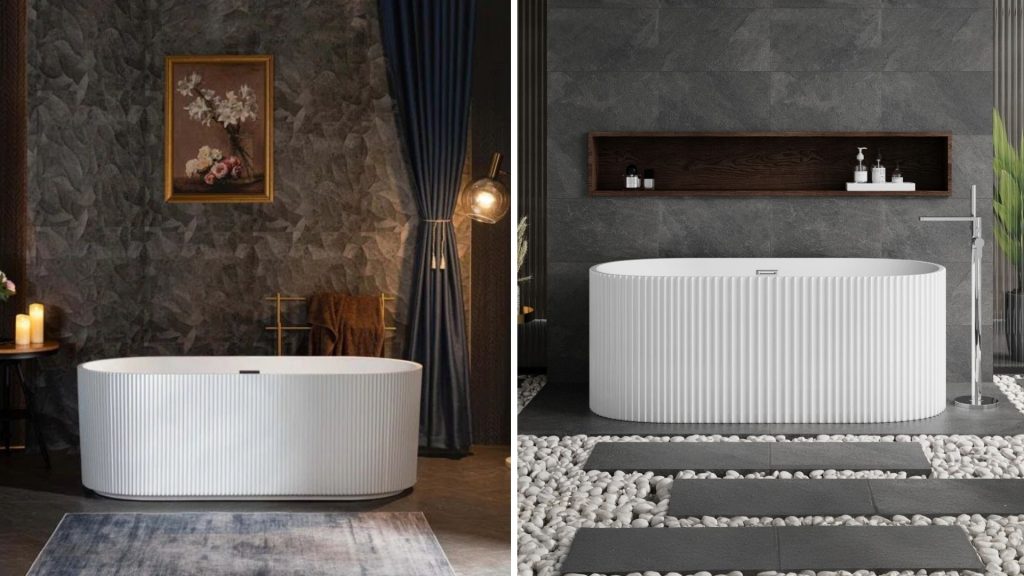
- Textured and fluted bathtubs have vertical grooves, ridges, or patterns on their exterior.
- The main purpose of the texture is to add visual interest and a tactile element to the tub’s design.
- This style helps break up the plain surface of a simple tub without needing bold colours.
- The fluted details often provide a subtle vintage or art deco feel to the bathroom.
- You will typically find this texture on the outside of the tub, while the inside remains smooth.
- These tubs are commonly made from materials like acrylic, stone resin, or cast iron that hold the shape well.
- One practical benefit is that the texture can help to hide minor scratches and water spots.
- They work well in minimalist bathrooms to prevent the space from feeling too sterile or plain.
- Keep in mind that the grooves will need to be dusted or wiped clean during regular cleaning.
Integrated and Alcove Tubs with a Luxe Feel
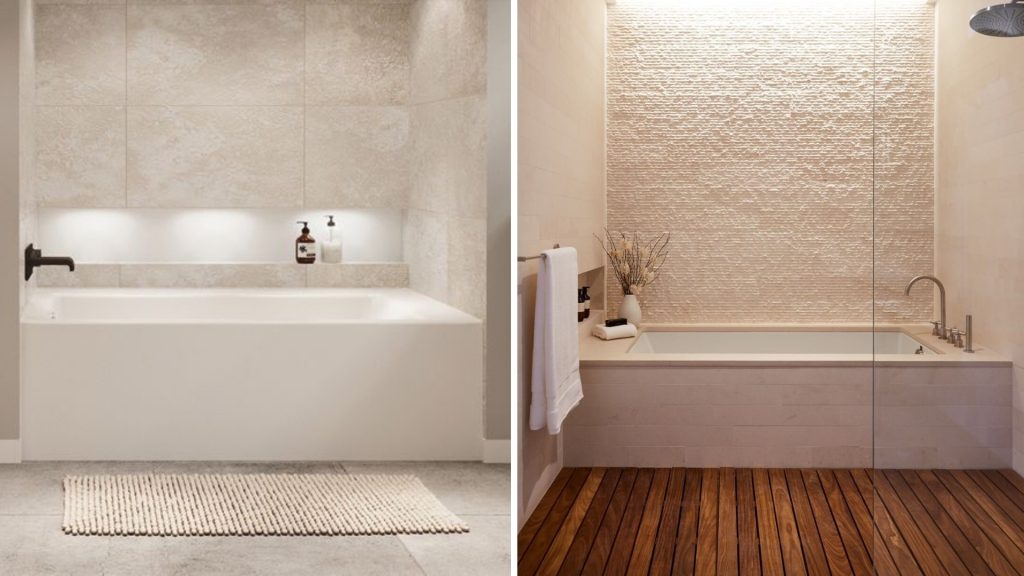
- These are built-in tubs that are seamlessly incorporated into a tiled or stone surround.
- They often feature a wide, flat ledge that is part of the surrounding platform.
- This ledge is practical for holding bath products, a candle, or a glass of wine.
- The design creates a very clean and custom-built look for the bathroom.
- They are a space-efficient choice because they fit neatly into an alcove or corner.
- You can achieve a high-end, spa-like feel by using materials like large-format tiles or slab stone for the surround.
- This style offers a more streamlined and architectural appearance than a freestanding tub.
- It is a practical option for a shower-over-bath configuration while still maintaining a luxury feel.
- The main installation requirement is building the platform and ensuring it is properly waterproofed.
Natural Stone and Solid Surface Tubs
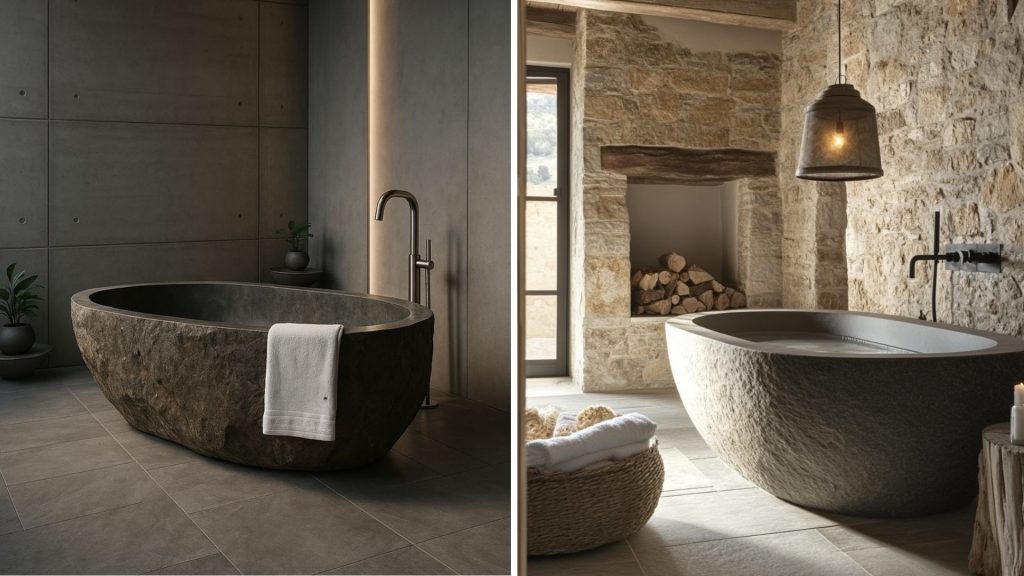
- These tubs are carved from a single block of material like marble, granite, or travertine.
- Solid surface versions are made from a mix of minerals and resins that mimic the look of natural stone.
- The main appeal is their substantial and luxurious presence in the bathroom.
- They have a very smooth, non-porous surface that is generally easy to clean.
- A key practical benefit is their excellent heat retention, keeping your bath water warm longer.
- Each natural stone tub is completely unique due to the variations in the stone’s veining.
- They are extremely heavy and require professional installation to ensure your floor can support the weight.
- This type of tub represents a significant investment and is one of the more expensive options.
- While durable, some natural stones can be susceptible to etching or staining from harsh chemicals.
Bold Colour and Matte Black
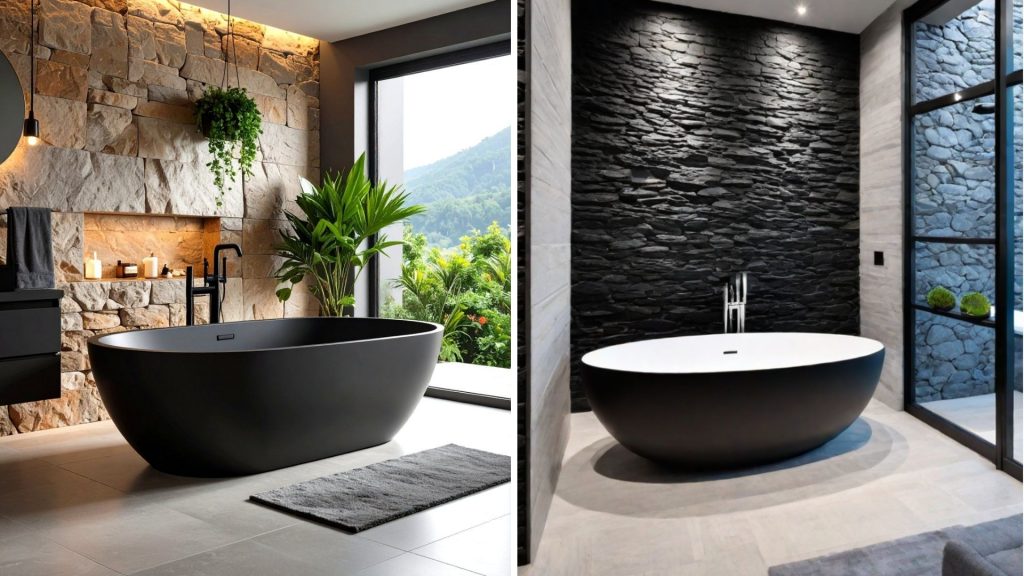
- These bathtubs use colour as a primary design element to create a focal point in the bathroom.
- Matte black is a particularly popular choice for a modern and powerful look.
- Other common colours include navy blue, forest green, and deep charcoal gray.
- The finish is often a matte or satin, which feels more contemporary than a high-gloss shine.
- This is an easy way to add personality and drama to a neutral-coloured bathroom.
- Coloured tubs work well as a contrast against light-coloured tiles or walls.
- You will typically find these finishes on materials like cast iron, solid surface, or coated acrylic.
- Matte finishes can sometimes show water spots or soap residue more easily than glossy surfaces.
- It is important to use the manufacturer’s recommended cleaners to avoid damaging the finish.
Compact and Walk-In Tubs
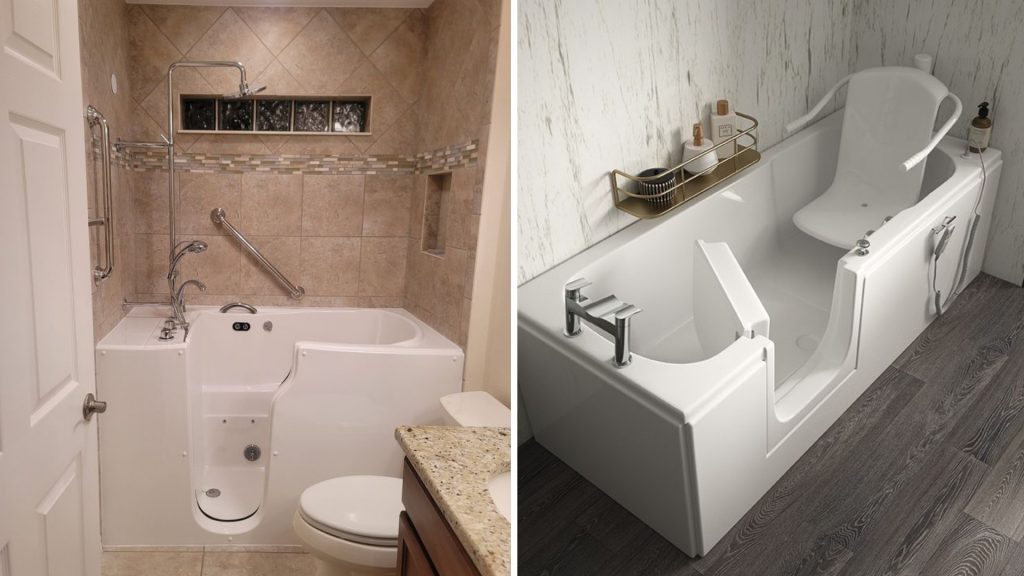
- Compact and walk-in tubs are designed for smaller spaces or for those who have difficulty stepping over a high tub wall.
- They feature a watertight door on the side that opens to allow you to walk in and sit down.
- You enter the tub before filling it with water, and you must remain inside while it drains after your bath.
- These tubs are almost always used as a shower as well, with a handheld showerhead included.
- Many models come with built-in features for safety and comfort, like a built-in seat and grab bars.
- They are a practical solution for aging in place or for anyone with mobility concerns.
- The main functional drawback is the waiting time for the tub to fill and drain with you inside.
- They require a professional installation to ensure the door seal is completely watertight.
- While traditionally utilitarian, newer models are designed with a much more modern and polished appearance.
Smart and Hydrotherapy Bathtubs
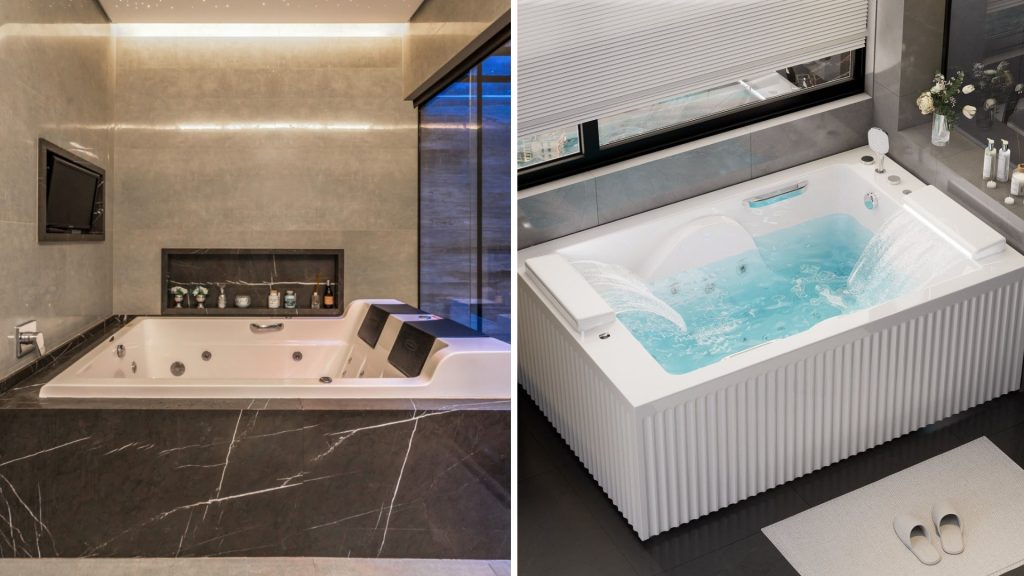
- Smart and hydrotherapy tubs use technology to enhance the bathing experience beyond a standard soak.
- They often include water or air jets that massage the body to help with muscle relaxation.
- You can typically find models with built-in heating systems to keep your bath water at a set temperature.
- Many of these tubs feature chromatherapy, which uses coloured LED lights to create a calming mood.
- Some high-end models include built-in speakers or Bluetooth connectivity to play music from your own device.
- These features are controlled through a digital interface, either on the tub itself or via a remote.
- The main benefit is the ability to create a personalized spa-like experience for relaxation and recovery.
- This technology adds significant cost to the tub, both for the initial purchase and for any potential repairs.
- It’s important to understand that jet systems require regular cleaning to prevent buildup of bacteria and mold.
Terrazzo and Composite Material Tubs
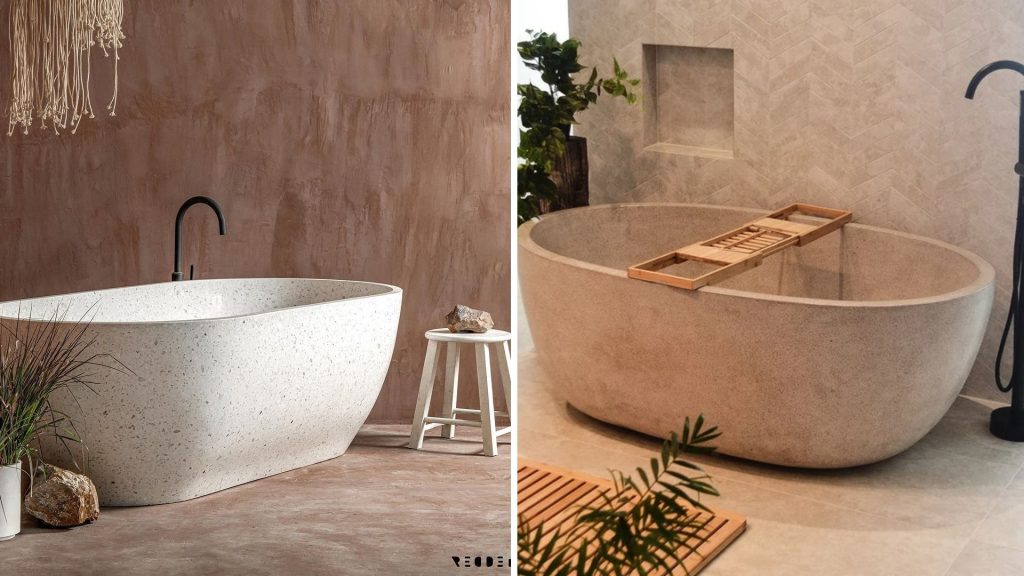
- Terrazzo and composite tubs are made from a blend of materials like stone chips, quartz, or glass mixed with a resin or cement base.
- This manufacturing process creates a unique, speckled appearance that is different in every tub.
- The surface is non-porous, which makes it easy to clean and resistant to stains.
- These materials are very durable and less prone to chipping or cracking compared to some natural stones.
- A key practical benefit is their excellent heat retention, keeping bathwater warm for a long time.
- They offer the visual interest of natural stone but often at a more accessible price point.
- The finish is typically smooth to the touch, despite the textured visual look from the embedded chips.
- These tubs are heavy and will require professional installation to ensure proper support.
- They are a versatile choice that can fit well in both modern and eclectic bathroom designs.
Double-Ended and Double-Slipper Tubs
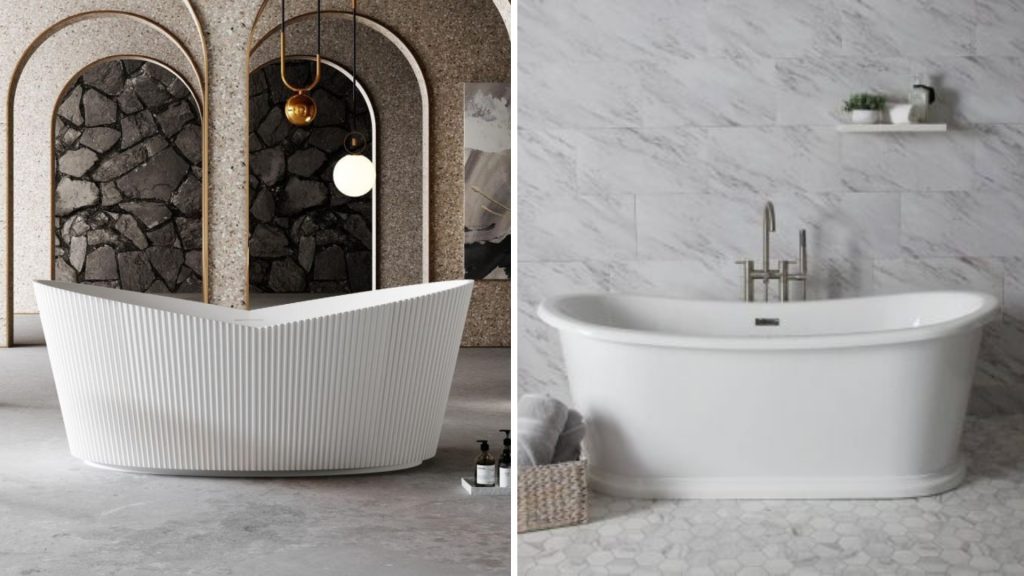
- A double-ended tub is shaped the same at both ends, with the drain and faucet typically placed in the center of the tub’s length.
- A double-slipper tub has a high, rolled back at both ends, creating a curved “slipper” shape on each side.
- This symmetrical design is ideal for placing the tub in the center of a room as a focal point.
- The main functional benefit is that it allows two people to comfortably lounge at either end.
- It also provides flexibility for a single bather, as you can choose which end to recline in.
- These designs are almost always freestanding and require space around them for access and cleaning.
- They are generally larger and require a bigger bathroom footprint than a standard single-ended tub.
- This style is associated with a classic, traditional look but is also available in more modern designs.
- The central placement of the faucet requires a floor-mounted or wall-mounted filler that can reach the middle of the tub.
Plinth-Mounted Tubs
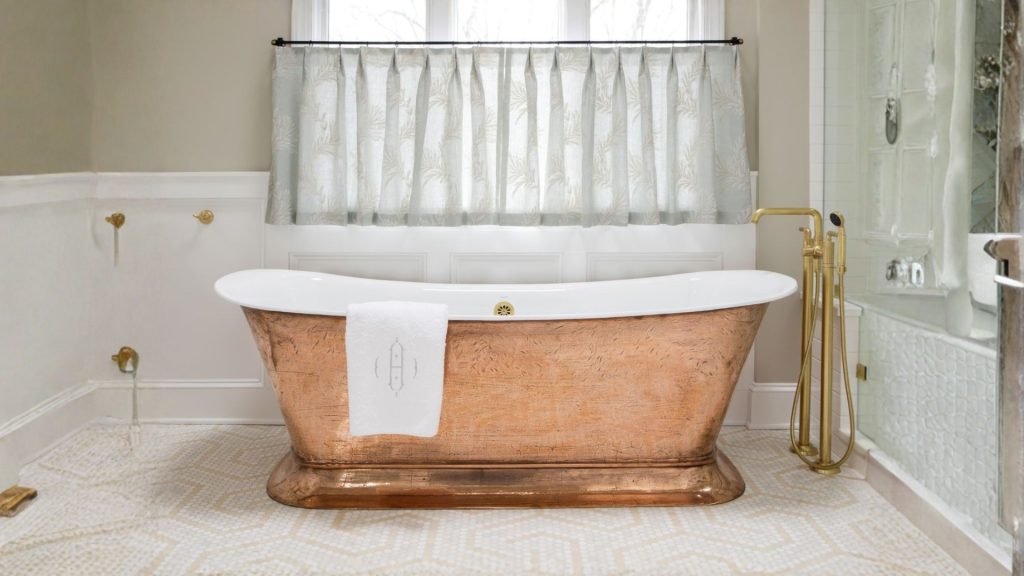
- A plinth-mounted bathtub is a freestanding tub that sits on a flat, sturdy base instead of having legs or feet.
- The base, or plinth, is usually a rectangular or custom-shaped platform that supports the entire bottom of the tub.
- This creates a very clean and grounded look, as the tub appears to rise directly from the floor.
- The style is highly architectural and works well in modern, minimalist bathroom designs.
- It offers a more integrated appearance than a tub with exposed legs, making it feel like a permanent fixture.
- The plinth itself is typically constructed from a material like tile, stone, or waterproof paneling to match the surround.
- This installation makes the tub very stable and eliminates the need to clean underneath it.
- A key consideration is that the plumbing for the drain and water supply must be planned and installed within the plinth structure.
- Because the tub is fixed to the plinth, it can be more difficult to access plumbing for repairs in the future.
Curved and Organic Shapes
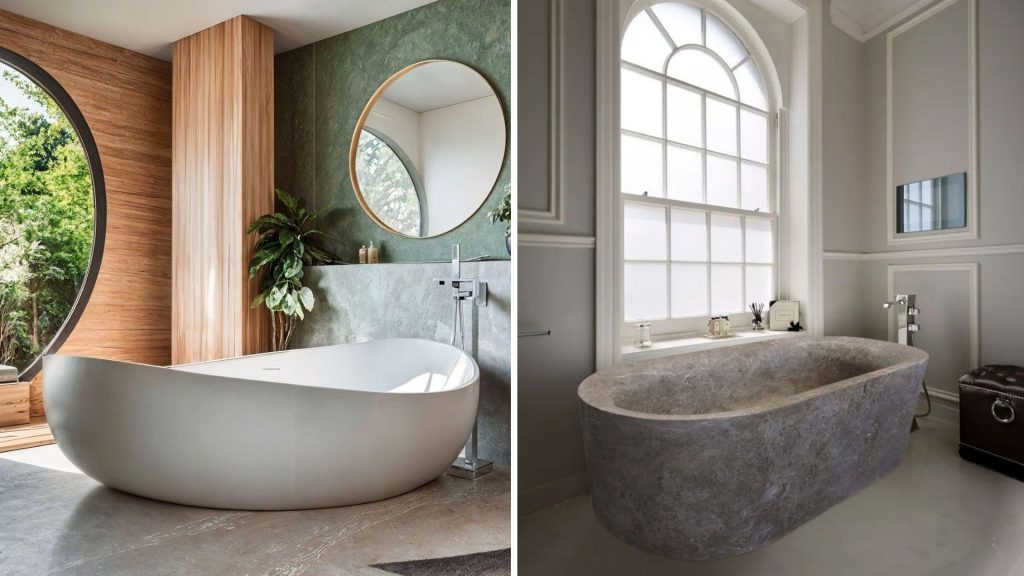
- These bathtubs feature soft, rounded lines and forms that are inspired by shapes found in nature.
- The design avoids sharp corners and hard edges in favour of smooth, flowing contours.
- Common shapes include oval, egg-shaped, or designs that resemble a smooth river stone.
- The goal is to create a gentler and inviting look in the bathroom.
- This style provides a clear contrast to the sharp, geometric lines often found in modern cabinetry and tiles.
- The organic shape is primarily a design feature and does not typically change the interior bathing space.
- These tubs are almost always freestanding and act as a sculptural centerpiece in the room.
- The curved exterior can sometimes make the tub slightly wider and require more floor space.
- This style works well in bathrooms that aim for a softer, more relaxed or spa-like atmosphere.
How Can Opalspace Help You?
As we’ve seen, choosing the perfect bathtub is a balance of personal style, practical needs, and overall bathroom design. With so many stunning options, the ideal choice is the one that easily integrates with your vision and lifestyle.
This is where our expertise comes in. As your comprehensive home interior design partner, we help you navigate these choices. We ensure your new bathtub is not just a standalone item, but a harmonious part of a beautifully designed and fully functional bathroom, crafted for your daily relaxation and your home’s long-term value.
This is where our expertise comes in. As your comprehensive home interior design partner, we help you navigate these choices. We ensure your new bathtub is not just a standalone item, but a harmonious part of a beautifully designed and fully functional bathroom, crafted for your daily relaxation and your home’s long-term value.
FAQs
1. What are the key factors to consider when choosing a bathtub for a home?
When selecting a bathtub for your home, the primary considerations are the available space, your budget, and your personal needs. You must accurately measure your bathroom to determine the feasible bathtub size and dimensions. The bathtub design should complement the overall aesthetic of your bathroom, whether you prefer a modern freestanding piece or a space-saving alcove model. Your daily routine is also crucial; a deep soaker tub is ideal for relaxation, while a shorter, wider tub may be better for bathing children.
2. How much does a typical bathtub installation cost?
The total bathtub price is a combination of the unit cost and professional installation. A basic alcove bathtub can be relatively affordable, while a premium freestanding model made of materials like stone resin or copper will be significantly more expensive. Installation costs also vary based on the complexity of the project, such as whether plumbing needs to be moved or new flooring is required. It is essential to factor in these additional expenses beyond the initial bathtub price to create an accurate budget for your project.
3. What is the standard bathtub size for a residential bathroom?
The standard bathtub size for a typical alcove installation is approximately 60 inches in length, 30 inches in width, and with a depth around 18 inches. However, bathtub dimensions can vary widely to suit different spaces and needs. For smaller bathrooms, shorter or narrower models are available, while larger master bathrooms can accommodate expansive soaker or whirlpool tubs that are over 70 inches long. Always verify the exact product dimensions and measure your space carefully before making a purchase.
4. How does the bathtub curve affect comfort and design?
The bathtub curve is a critical element that directly influences both ergonomic comfort and visual appeal. A well-designed curve, such as a sloped backrest, provides proper lumbar support, making long soaks more relaxing. The exterior curve of a freestanding tub can define the style of the entire bathroom, from classic clawfoot designs to modern oval shapes. The interior bathtub curve also determines how much water the tub holds and how comfortably an adult can recline without feeling cramped.
5. Which type of bathtub is best for a small bathroom?
For a small bathroom, an alcove or drop-in tub that fits into a three-wall enclosure is often the most space-efficient choice. These models are designed to maximize interior bathing space while adhering to a compact footprint. Another excellent option is a corner bathtub, which utilizes an often-wasted area of the bathroom. When space is limited, prioritizing precise bathtub dimensions is key to finding a model that offers a comfortable bathing experience without overwhelming the room.
6. What is the difference between an alcove and a freestanding bathtub design?
An alcove bathtub design is installed against three walls, making it a practical and common choice that is often combined with a shower. A freestanding bathtub is a standalone fixture that can be placed anywhere in the bathroom, provided the plumbing can be accessed. The freestanding design serves as a dramatic focal point and offers more flexibility in placement. The alcove design is generally more budget-friendly and space-efficient, while the freestanding tub makes a stronger style statement.
7. Which is better between a bathtub or a jacuzzi?
The choice between a standard bathtub and a jacuzzi (or whirlpool tub) depends on your primary goal for the bath. A standard bathtub is designed for soaking and is generally more affordable and easier to maintain. A jacuzzi incorporates hydrotherapy jets that massage the body, which is beneficial for relieving muscle tension but comes at a higher bathtub price and requires more complex cleaning and maintenance. For pure relaxation, a soaker tub may suffice, but for therapeutic benefits, a jacuzzi is the superior option.

